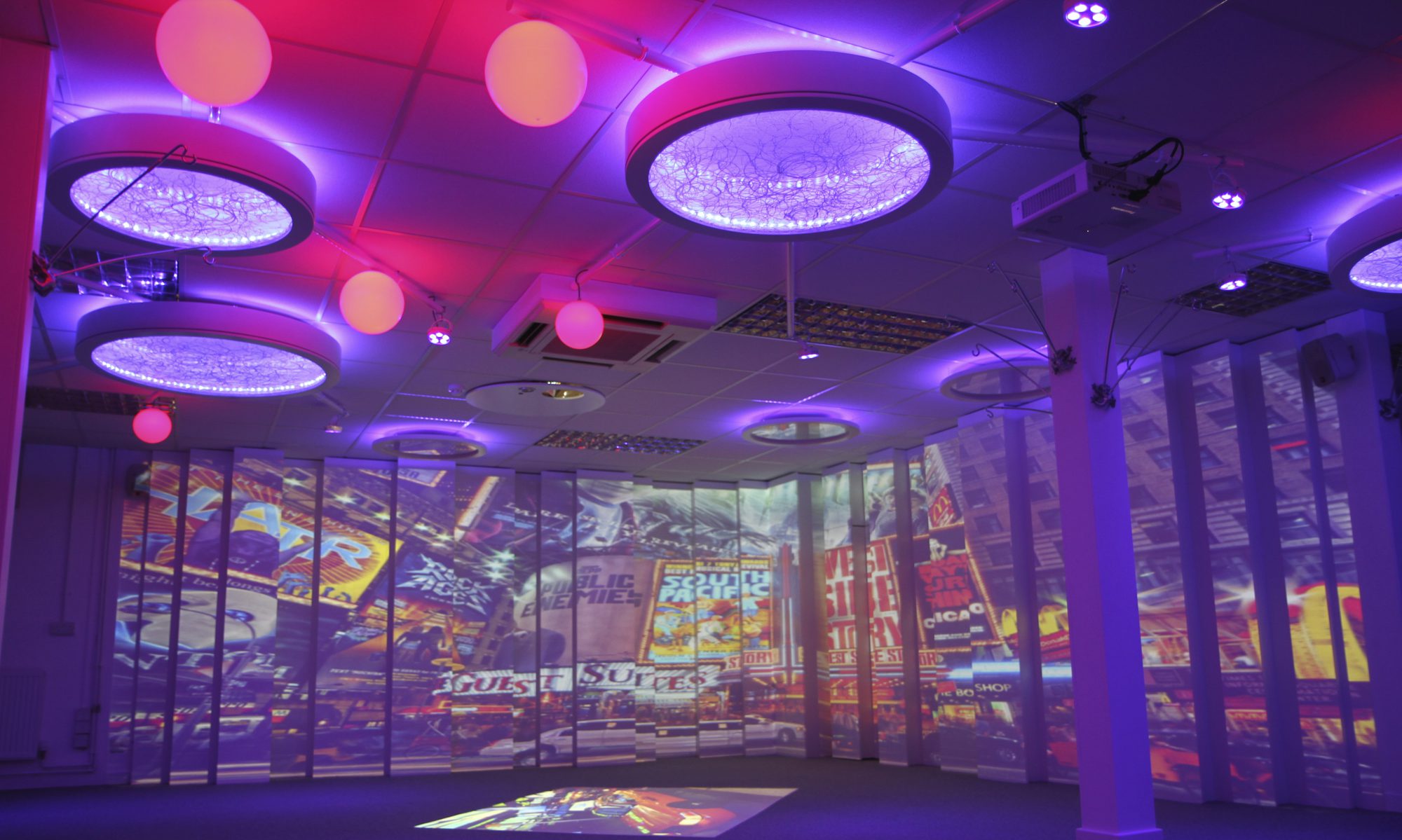
Cathy was recently asked to write an article for Headteacher Update. In the piece she discusses how we can be more creative in the classroom and encourages teachers to use technology for inspirational lessons. You can either read the article over at Headteacher Update’s website or we’ve posted the full text below.
We’d love to know your thoughts so feel free to leave us a comment in the box below.
MAKING THE TIME TO BE CREATIVE – 14 JUN 2012
WHILE MANY OF US AGREE THAT A CREATIVE, BROAD EDUCATION IS CRUCIAL, THE PRESSURES OF TARGETS AND SATS OFTEN INTERFERES. CATHY CROSS DISCUSSES THE POWER OF IMMERSIVE LEARNING, CREATIVITY, THE ROLE OF BASIC TECHNOLOGY, AND HOW SCHOOLS CAN MAKE THE TIME
I am on a ship with a class of nine and 10-year-olds. As a champagne bottle smashes against the bow we hear the roar of a crowd. They are cheering wildly. Ticker-tape fills the air and thousands of jubilant faces wave us on. The adventure is beginning.
On deck, year 5 is excited. They are relaxing on loungers in the bright sunlight imagining what they will do on arrival into New York. But as the light fades there are footsteps. The noises get louder until we hear calls to abandon ship. Everyone rushes to the lifeboats. RMS Titanic has hit an iceberg.
As I sit in this classroom at St Christopher’s Primary School in Speke, Liverpool, I study the children’s faces. They are hooked. Surrounded by images of waves and ice projected on to the walls, they try to find their way to safety, a task hampered by the low lighting.
Suddenly one child points excitedly. He has seen a light flashing in the distance. Each pupil is asked to describe what it would feel like to have been rescued and then see the Statue of Liberty on the horizon. One boy tells me: “I feel guilty because I’m here and the others aren’t.”
This is the power of immersive learning. By immersive I mean a lesson that touches all the senses. Using large-scale imagery, stereo sound, lighting and found objects, the story is magnified, physically and emotionally, so it has a greater impact on the pupils.
But it is not just about projecting a picture of a ship on the wall. It is how you get children to interact and emotionally connect with that ship. And it is how a teacher can be inspired to come up with activities that bring the whole experience together.
Earlier I had watched this class teacher open the lesson with machine sounds. There was the clink of metal on metal, engine noises and the shouts of busy workers. Then images of Titanic’s construction filled the walls. Children passed round cold hunks of steel and wooden planks, touching the type of materials that went into building the colossal ship. They saw the horse and carts that pulled those parts and the sky-high scaffolding.
Suddenly the walls go blank and the sound of Titanic survivors recounting their experiences is piped in. I see the children’s mouths gape open as they hear the voices and see images flashing up of survivors huddling together on the deck of a rescue ship. They are then asked to write Marconigrams – wireless messages sent via radio waves, a little bit like texts or tweets. Children tell their families that they are okay and they are allowed to include one abiding memory of their trip in the message.
The next day I sit with the same year 5 class and their teacher but in a different room. They are desperate to board the ship again. “Are we going back into the room again sir?” “When are we learning about the Titanic next?”
Later, their class teacher tells me the children retain knowledge so much better once they have been immersed in the subject. This mix of high-tech and low-tech enhances their understanding about the impact of Second World War, deforestation in South America or life in Ancient Egypt. She believes that combining these different resources with the space to think and act out scenarios in a unique environment speeds up the children’s connection with a subject or theme.
It also provides pupils with a new environment, a den or safe space, where they can be who they want to be. The class teacher reports an increase in confidence and less fear of failure: “Pupils don’t have to feel worried about giving the wrong answer. It’s an interactive, enjoyable atmosphere and it’s really good fun.”
This “f” word is one that I’m particularly interested in. As a professional den-maker I help teachers transform classrooms in to new worlds. Somewhere children can explore, play and, above all, have fun. And because they are having so much fun they often do not realise they are also learning.
But I am not sure that fun fits in with the government’s plans for the new curriculum. Rigorous literacy and numeracy, yes. Learning the Kings and Queens of England in chronological order, yes. But what about the broader learning experience? What about having fun and taking risks?
What about developing a child’s creative skills so they can come up with new solutions, reflect and form opinions about big issues. These softer skills allow a child to interpret information, be adaptable and resilient to change and importantly, to enjoy learning.
My fear is that people at the top are no longer acknowledging creativity. This is then filtered down through Ofsted deliverables that put little value on the development of softer creative skills. And with these new developments, I can see the pleasure and fun being slowly squeezed out of learning.
The same goes for teaching. The government’s drive for core subjects will put a strain on teachers both in terms of stress but also motivation. If you are being pressured to focus unrelentingly on maths, English and science and to teach these subjects in a certain way then many teachers may lose inspiration. Hence why teaching these core topics using new ideas and resources that touch every sense is so important. Immersing children in a theme or subject isn’t only nourishing for them, it allows teachers to remain engaged and passionate about their work.
Mixing electronic gadgets and found objects is also a powerful way to work with children who have SEN. David struggles with concentration and engagement and has additional learning needs. But he had become really interested in space and was curious to know what it would be like to eat his sandwiches on the moon.
With the help of support staff, David built a cardboard rocket in class one day and decorated it. The teachers told him to bring a packed lunch the following day for a “trip”. David entered the classroom to discover the rocket in the centre and a moving starscape on the projection screens. As the teachers counted for lift-off, sound effects of the rocket thrust boomed from the deep bass of the surround sound system and the adventure began. The staff were amazed at David’s focus and excitement.
The other thing that sticks in my mind from this story is how empowered the teachers felt – using technology to give David such an unforgettable learning experience.
Those education practitioners were like many I meet – they described themselves as “not very technical”. Yet within a day they had developed a space idea for David and translated this into sound effects and projected imagery.
In contrast to our digitally fluent pupils, I often see a hesitancy and lack of confidence in teachers when it comes to bringing their subject alive with technology. One problem is accessibility. Making David’s cardboard rocket could be done right away. Scissors, glue, tissue paper, paint and a few boxes were all that were needed.
But without the roar of a rocket engine and a moving starscape floating around him, David would have just been sitting in a cardboard rocket. The audio, lighting and projection took the experience up a level and reached all his senses. It was the ultimate immersive backdrop to his space journey.
The fact is that some teachers are afraid of technology. So how can we boost confidence? The key is to keep it simple and intuitive. It’s not about expensive gadgets but straightforward electronic tools that are immediately understandable and quick to use. If a teacher takes a video they should be able to instantly use this for immersive learning. Or maybe they need to search for images on the internet in the middle of the lesson and then project them on to the walls of the classroom to explain a difficult concept.
Making technology immediate and simple like this also opens it up to all staff members rather than just the computer-savvy teacher who always gets lumbered with IT tasks.
Integrating high-tech and low-tech is hugely powerfully in terms of stimulating imaginative thinking and increasing pupil enjoyment. I am part of a ground swell of education practitioners in this country who are trying to champion the development of teaching and learning with creativity in mind. Technology is central to this campaign. Our aim is to make classrooms places of fun and play – not just spaces where children learn great swathes of knowledge by rote.
 4D’s latest press coverage comes from Sustain Magazine. In this article, our creative director, Cathy discusses the increased demand for primary school places and the push for standardised school design brought in by the coalition government. There is also a spotlight on three of our spaces at Parklands CLC, Croxteth Primary and St Christopher’s Primary with lots of brilliant photos.
4D’s latest press coverage comes from Sustain Magazine. In this article, our creative director, Cathy discusses the increased demand for primary school places and the push for standardised school design brought in by the coalition government. There is also a spotlight on three of our spaces at Parklands CLC, Croxteth Primary and St Christopher’s Primary with lots of brilliant photos.






